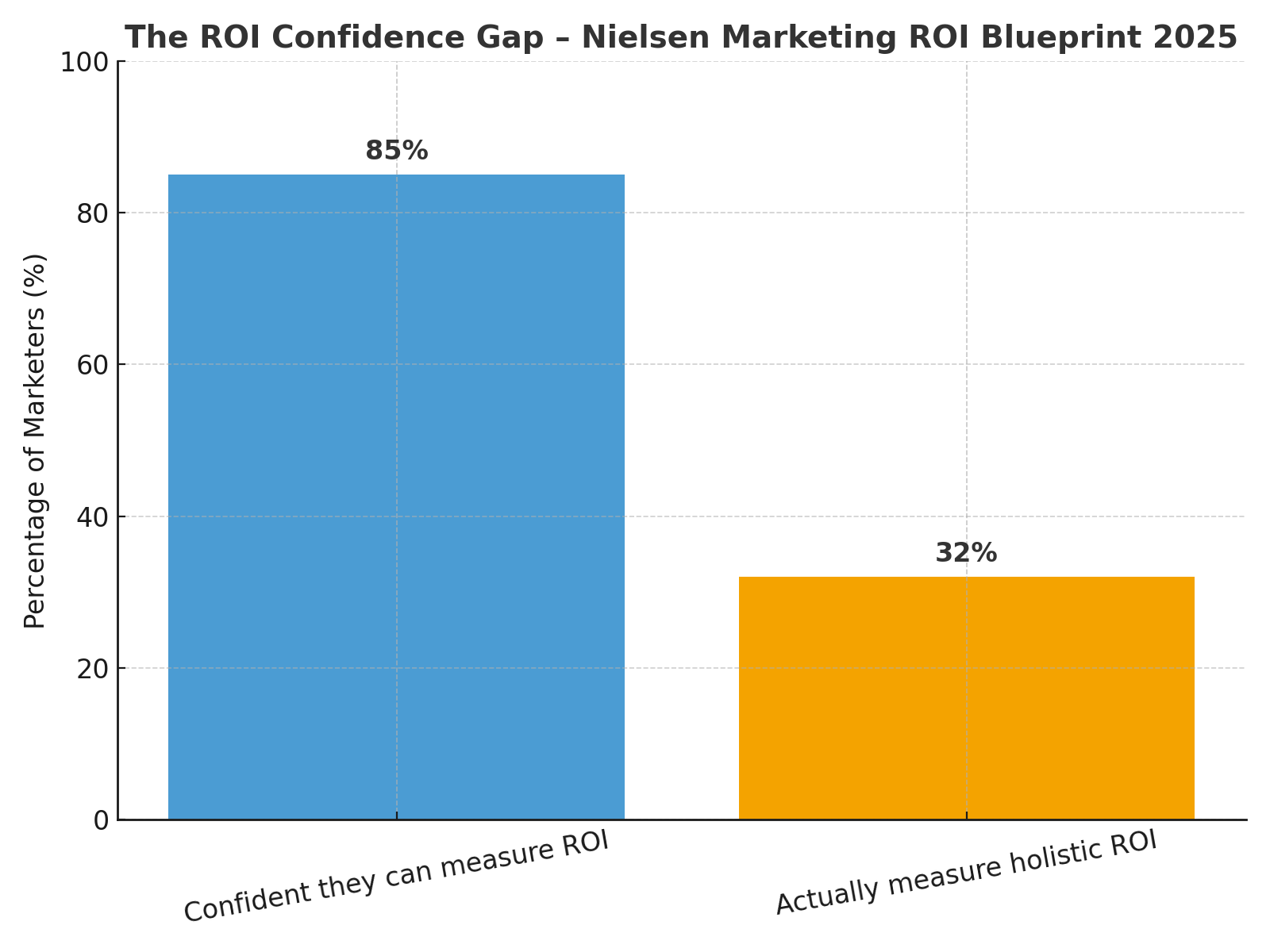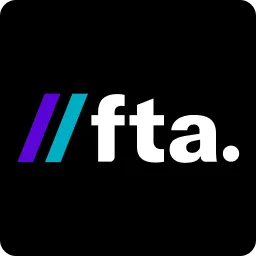How Creative Optimization Drives 40% More ROI in Performance Campaigns
Brands that refreshed creatives every 4-6 weeks saw engagement rise by up to 38%.
In today’s landscape, where more than 40% of digital ad spend is estimated to be wasted due to inefficient creative, targeting, or attribution, creative optimization is no longer optional.
In India alone, digital ad spend crossed ₹55,000 crore in 2024, growing over 15% year-on-year, yet most CMOs admit less than 60% of that spend converts efficiently. The gap isn’t in reach or tech; it’s in creative. Across categories, creative relevance now determines whether a campaign scales profitably or just adds to ad fatigue.
(Source: GroupM TYNY 2024, Dentsu Ad Spend Report 2024)
Multiple global studies, including Nielsen Catalina and Google Creative Works, show that creative accounts for roughly 47-50% of total sales impact. Internal FTA analyses across 20 or more active clients indicate ROI uplifts of 28-44% once structured creative optimisation frameworks were applied.
For senior marketers and performance leads at agencies and enterprise brands, the key lever stands out: creative optimization. When done correctly, this lever can unlock ROI uplifts of 30-40% or more.
In this blog, we will:
- Define what we mean by creative optimization in performance campaigns
- Present data and benchmarks of ROI lifts (including our proprietary FTA lens)
- Drill into questions CMOs ask and supply actionable checkpoints
- Build a step-by-step model for implementation at scale
- Conclude with what your next quarter should prioritise
What is “creative optimization” and why does it matter?
Creative optimization means continuously refining the visual, messaging, and structural elements of your ads to improve relevance, engagement, and outcome-conversion. It is not simply “make one new ad” but rather:
- Test multiple versions (headlines, visuals, CTAs)
- Use analytics to identify what works (CTR, CVR, CPA)
- Scale winners and kill under-performers
- Apply across channels (display, video, social, programmatic)
Creative quality now drives more than 50% of ad performance variance.
An average ROI uplift of 68.5% when the creative was optimised systematically.
What this means in practice
- Prioritise testing message framing before visual style. Value propositions usually shift performance faster than color or layout changes.
- Rotate short and long formats (6-second bumpers versus 15-second videos) to isolate attention drop-off.
- Use sequenced storytelling, a proven YouTube tactic that can increase brand recall by up to 60%.
- Higher relevance leads to improved engagement (CTR, interaction)
- Better conversion rates lower the CPA, leading to higher ROAS.
- Reduced waste means fewer impressions spent on ineffective creative.
For B2B-facing brands and agencies targeting decision-makers over 35, this is not a “nice to have” but a must-have: media costs are rising, audiences are fragmented, and attention is scarce.
Creative optimisation becomes the differentiator between spending more and actually getting more.
What ROI uplift can you realistically expect?
Benchmarks and real-world data
- A major study found that campaign ROI increased by an average of 68.47% when creative optimisation was applied.
- This represents the upper potential of creative optimization when it’s done systematically. The brands in this study used continuous data-backed testing, variant analysis, and real-time optimization across multiple channels. It shows how creative iteration can become a direct multiplier of marketing efficiency, not just an aesthetic improvement.
- This represents the upper potential of creative optimization when it’s done systematically. The brands in this study used continuous data-backed testing, variant analysis, and real-time optimization across multiple channels. It shows how creative iteration can become a direct multiplier of marketing efficiency, not just an aesthetic improvement.
- A case study depicted achieved a 40% increase in ROI by adopting a structured creative testing and refinement framework.
- It reflects what’s achievable when you introduce disciplined testing cycles, feedback loops, and performance tracking into existing campaigns. It’s proof that even modest operational shifts in how creative is tested and refreshed can unlock substantial ROI gains.
- It reflects what’s achievable when you introduce disciplined testing cycles, feedback loops, and performance tracking into existing campaigns. It’s proof that even modest operational shifts in how creative is tested and refreshed can unlock substantial ROI gains.
- Dynamic creative optimisation (DCO) workstreams report ROAS lifts of up to 58% and CPA reductions of ~30% in mobile app campaigns.
- This is the automation layer of creative optimization. Dynamic Creative Optimization (DCO) uses machine learning to assemble and serve personalized ad variations in real time automatically.
Generative AI now allows micro-variant production, automated resizing, language localisation, and message versioning without manual load. When paired with human creative direction, these tools cut production time by up to 60 percent and feed real-time learning loops across channels.
That’s why CMOs and performance leads view creative optimization as the highest-leverage variable left in modern campaigns.
Why are we focusing on “40%”
From an agency perspective, targeting a 40% uplift is credible yet ambitious enough to drive change. It positions creative not as “just another variable”, but as the primary lever for growth in performance campaigns. At FTA Global, we advocate for this as our benchmark in kick-off discussions.
Factors that influence the lift
What key questions do CMOs and marketing decision-makers ask?
1. How do I know it is the creative, not the media or targeting?
- Ensure you have structured tests: hold targeting constant, vary only creative.
- Use metrics beyond CTR: conversion rate, cost per acquisition, revenue per impression.
- Use dashboards that segment performance by creative variant, not just ad group.
2. What’s the right cadence for refreshing creative assets?
- Benchmark indicates that refreshing every 4-6 weeks leads to meaningful engagement uplift.
- But for high-volume digital campaigns, even weekly micro-variants might be required.
- Use fatigue metrics: declining CTR, rising CPM may signal creative saturation.
3. What size or scale of brand or channel does this apply to?
- Even smaller brands can benefit: research shows creative optimisation works for DTC and enterprise alike.
- For B2B and enterprise performance campaigns, the same logic applies: improved message relevance, segmentation, and asset variation drive results.
4. What part does automation or dynamic creative play into this?
- DCO and programmatic creative optimisation automate variant assembly and delivery based on data.
- Automation helps scale but doesn’t replace strategic asset construction: you still need a strong creative library and hypotheses.
How to build a creative optimisation engine at scale (The FTA Framework)
- Establish baseline & goals
- Define KPIs: ROAS, CPA, conversion rate by creative variant.
- Audit current creative performance: identify top and bottom performers.
- Define KPIs: ROAS, CPA, conversion rate by creative variant.
- Develop a modular creative asset library
- Build variations of visuals, headlines, CTAs, and offers.
- Tag each creative with metadata (segment, message variant, channel).
- Ensure brand consistency across all variants.
- Build variations of visuals, headlines, CTAs, and offers.
- Segment your audience
- Use first-party, CRM, and behavioural data to define segments (industry, job title, company size, intent).
- Map each segment to creative hypotheses (what message resonates).
- Use first-party, CRM, and behavioural data to define segments (industry, job title, company size, intent).
- Deploy tests (A/B/n, multivariate)
- Prioritise highest impact variables (value proposition, CTA, image).
- Use structured testing: control variant vs test variant.
- Track performance by creative across metrics (CTR, CVR, CPA).
- Prioritise highest impact variables (value proposition, CTA, image).
- Use analytics and iterate
- Use dashboards to surface which variants perform best.
- Kill under-performing creatives early; scale top performers.
- Introduce fresh variants regularly (every 4-6 weeks).
- Monitor creative fatigue, frequency, and cross-channel performance.
- Use dashboards to surface which variants perform best.
- Implement dynamic creative optimisation (optional but scalable)
- Use DCO platforms to automate variant assembly and delivery in response to real-time signals.
- Integrate with your ad tech stack to feed performance data back into the creative loop.
- Govern and scale
- Document learnings in a “creative playbook” (which message/visual works for which segment).
- Allocate budget dynamically: spend more on high-performing creative plus scale across channels.
- Align cross-team (creative, media, analytics) around real-time optimisation loops.
- Document learnings in a “creative playbook” (which message/visual works for which segment).
After “Govern and scale”, add:
- Create a Creative Intelligence Dashboard that tags each creative by audience, message, channel, and performance metric.
- Build a variant refresh calendar shared across media, design, and analytics teams to make testing cadence visible.
- Hold a Creative Stand-Up every fortnight for quick data review and next-step decisions.
A small example to better understand performance campaigns
Imagine a B2B software company that runs performance campaigns targeting enterprise decision-makers. They apply the above framework with these results:
- Segment “Financial Services C-Suite” receives a creative variant emphasising “Security & Compliance in 60 Days”.
- Segment “Technology Innovation Leads” receives “Deploy AI-powered Insights in 30 Days”.
After 6 weeks, the first segment variant logged a CPA 28% below baseline; the second variant improved the conversion rate by 32%. - Within 3 months, the aggregated campaign ROI improved by ~43%. This aligns with published benchmarks and demonstrates how creative optimisation drives measurable incremental return.
At FTA Global, we use this framework with our clients to shift the narrative: from media spend and targeting optimisation alone to creative as a growth engine.

(The graph depicts the gap between marketers’ confidence in measuring ROI and their actual ability to measure it holistically, as per Nielsen’s Marketing ROI Blueprint 2025.)
What should you avoid?
- Don’t test too many variables at once: you’ll lose signal.
- Don’t ignore mobile and cross-device implications: creative must adapt.
- Don’t assume one format fits all: video, display, and native all need tailored creative.
- Don’t neglect measurement: if creative variant attribution isn’t built in, you won’t learn.
- Don’t let your optimisation cycle stall: refresh, iterate, repeat.
Creative optimisation is your 40% ROI lever
If media costs are rising and audiences are more fragmented, the path to margin and efficiency is not simply “more budget” but “better creative”. At FTA Global, we believe creative optimisation should sit at the heart of your performance campaign strategy. When appropriately structured and executed with rigour, it drives the kind of ROI uplift that senior executives will approve, scale up, and protect.
Assign a dedicated creative optimisation task force, build your variant library, define your test cycle, and commit to measuring by creative variant. That will set you on the path to a 40% ROI uplift.
Creative fatigue as a cost centre
Every month, a brand runs fatigued creative, and it loses 10-25% of its media value due to higher CPMs and lower CTRs. That is the hidden tax most marketers ignore. Creative optimisation is not cosmetic; it is margin recovery.
CMOs, growth leads, and creative heads now share one common goal: efficiency. The brands that win in 2025 will not just buy more reach; they will build more innovative creative systems. Once a creative optimisation loop is in place, every future campaign runs cheaper, faster, and sharper.
Do you want more traffic?

How to Scale Personalisation in ABM Without Losing Focus?
.png)
Why Small Tasks Are the Next Big Revolution in Business Efficiency?







.jpeg)



